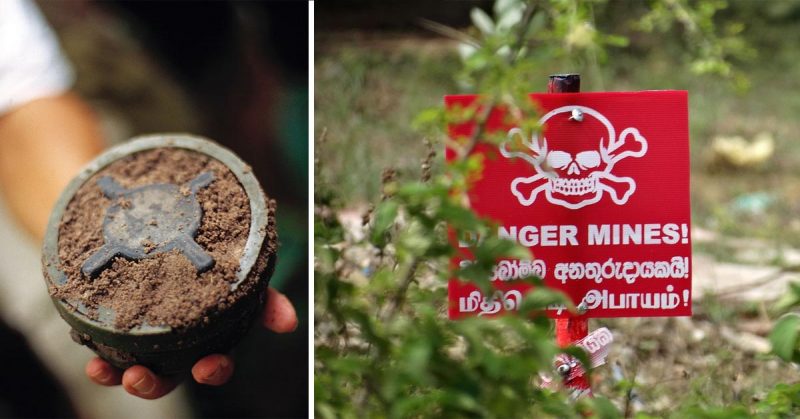Unexploded ordnance recently employed in Iraq, Yemen, and Ukraine to name but a few, or in the past, such as Vietnam, lies in wait for the unwary. Since 1975 when the Vietnam War ended, over 40,000 people in Vietnam have been killed, and approximately 60,000 others maimed.
Of all unexploded ordnance counting cluster bombs and artillery shells, perhaps the most prolific are anti-personnel land mines. Some estimates place their number at 100 million or more.
Land mines are the ideal soldier in many ways, said Paul Heslop, program director with the United Nations Mine Action Service. They don‘t require rest periods, they don’t sleep. Once planted and armed, they’ll last for decades.
Efforts to curtail their use can claim some credit. Two-year-old statistics, compiled by the Landmine and Cluster Munition Monitor, indicate there were 3,678 known injuries. Their use increased 12 percent over 2013, but that was substantially lower than the 9,200 wounded or killed in the 17-year period from 1999. In that year, a mine ban treaty came into effect that had been adopted in 1997 following a well-advertised campaign by the late British Princess Diana. In 2010, a similar agreement came into effect to prohibit cluster munitions.
Land mines are the ideal soldier, said Paul Heslop, program director of the Mine Action Service operated by the United Nations. They don’t require rest or sleep. Once armed and planted they’ll last for decades.
Cluster bombs developed since the 1940s are particularly murderous. A single bomb can contain dozens or hundreds of bomblets the size of baseballs. When the primary bomb opens, bomblets scatter in all directions shredding whatever they hit.
To date, 162 states have agreed to the land mine agreement and 119 to the ban on cluster ordnance. Refusing to sign are the United States, Russia, Saudi Arabia, Israel, North Korea, Iran, and China. The Pentagon describes land mines as helpful deterrents to an invasion by North Korea across the demilitarized zone into South Korea, The New York Times reported.
Even though the United States is not a signatory to land mine agreements limiting their use, the military tool is so distasteful that the US has scarcely used them since 1991 in the Persian Gulf War. The country’s dependence on cluster munitions has also declined. The high point in 2003 during the beginning of the Iraq War, haven’t been employed in the air war against the so-called Islamic State in Iraq and Syria.
According to some estimates mopping up unexploded ordnance could take a century.
